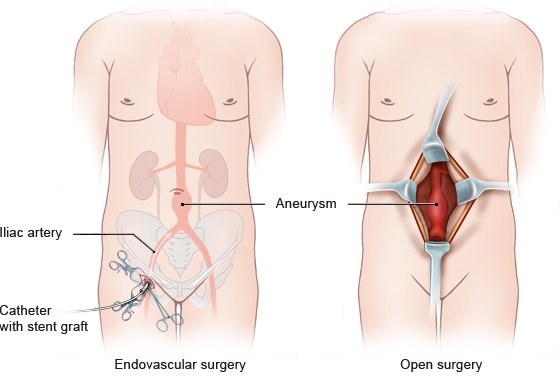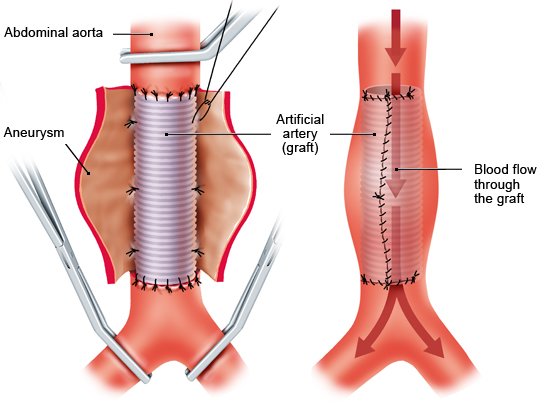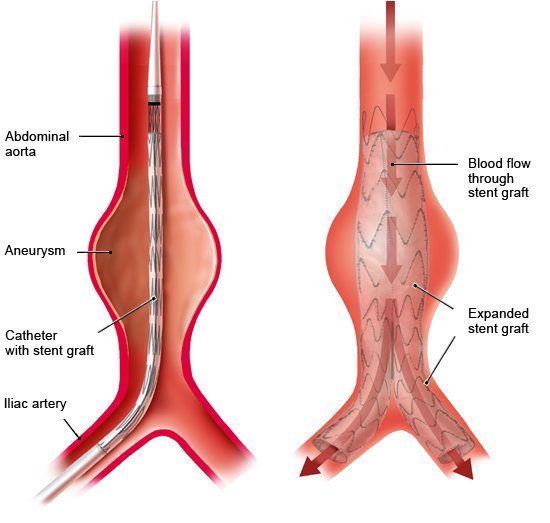AlOthman O, Bobat S. Comparison of the Short and Long-Term Outcomes of Endovascular Repair and Open Surgical Repair in the Treatment of Unruptured Abdominal Aortic Aneurysms: Meta-Analysis and Systematic Review. Cureus 2020; 12(8): e9683.
Antoniou GA, Antoniou SA, Torella F. Editor's Choice - Endovascular vs. Open Repair for Abdominal Aortic Aneurysm: Systematic Review and Meta-analysis of Updated Peri-operative and Long Term Data of Randomised Controlled Trials. Eur J Vasc Endovasc Surg 2020; 59(3): 385-397.
Deutsche Gesellschaft für Gefäßchirurgie (vaskuläre und endovaskuläre Chirurgie) (DGG). S3-Leitlinie zu Screening, Diagnostik, Therapie und Nachsorge des Bauchaortenaneurysmas. AWMF-Registernr.: 004-014l. 2018.
Kent KC. Abdominal Aortic Aneurysms. N Engl J Med 2014; 371(22): 2101-2218.
Paravastu SC, Jayarajasingam R, Cottam R et al. Endovascular repair of abdominal aortic aneurysm. Cochrane Database Syst Rev 2014; (1): CD004178.
Parkinson F, Ferguson S, Lewis P et al. Rupture rates of untreated large abdominal aortic aneurysms in patients unfit for elective repair. J Vasc Surg 2015; 61(6): 1606-1612.
Schmitz-Rixen T, Steffen M, Böckler D et al. Versorgung des abdominellen Aortenaneurysmas (AAA) 2019. Registerbericht des DIGG der DGG. Gefäßchirurgie 2021; 26: 41-48.
Ulug P, Powell JT, Martinez MA et al. Surgery for small asymptomatic abdominal aortic aneurysms. Cochrane Database Syst Rev 2020; (7): CD001835.
Yokoyama Y, Kuno T, Takagi H. Meta-analysis of phase-specific survival after elective endovascular versus surgical repair of abdominal aortic aneurysm from randomized controlled trials and propensity score-matched studies. J Vasc Surg 2020; 72(4): 1464-1472.
IQWiG health information is written with the aim of helping people understand the advantages and disadvantages of the main treatment options and health care services.
Because IQWiG is a German institute, some of the information provided here is specific to the German health care system. The suitability of any of the described options in an individual case can be determined by talking to a doctor. informedhealth.org can provide support for talks with doctors and other medical professionals, but cannot replace them. We do not offer individual consultations.
Our information is based on the results of good-quality studies. It is written by a team of health care professionals, scientists and editors, and reviewed by external experts. You can find a detailed description of how our health information is produced and updated in our methods.





